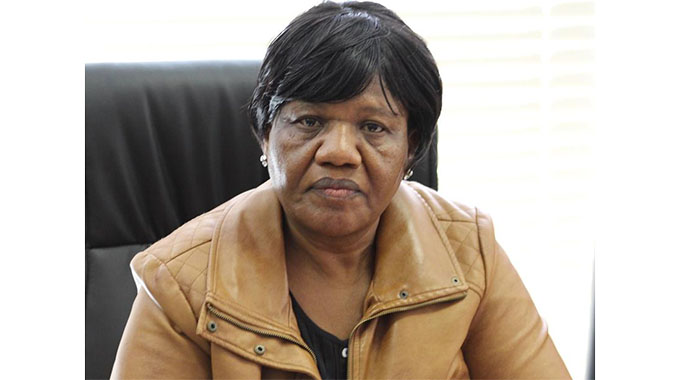Zim sees surge in mining investments

Business Reporter
Zimbabwe’s mining sector has witnessed a surge in investment over the past two years, with several companies investing heavily in exploration, expansion, and plant construction.
A recent survey by the Chamber of Mines of Zimbabwe (CoMZ), which generated insights from mining executives showed that lithium, gold, Platinum Group Metals (PGMs) and the ferrochrome companies have made substantial investments.
The report also revealed promising developments for Zimbabwe’s mining industry, indicating a projected 7 percent increase in employment in 2024, driven by ongoing expansion projects. Additionally, the majority of the mining executives surveyed expressed optimism regarding the prospects for economic growth in 2024.
The increase in investment is attributed to a number of factors, including the Government’s supportive policies, the discovery of new mineral deposits, and the strong global demand for minerals.
The mining sector is a major contributor to the economy, accounting for 13 percent of the gross domestic product and employing over 50 000. The sector also generates more than 70 percent of the country’s exports.
Under the lithium sector, Bikita Minerals leads the charge with over US$300 million invested in exploration work and expansion of the Bikita Lithium Mine operations.
The company has commissioned a dual lithium processing plant, including a spodumene project, a flotation separation plant, and a new smelting plant. These investments are expected to boost production to 300 000 tonnes of spodumene concentrate and 480 000 tonnes of petalite, according to the CoMZ report.
Acadia Lithium Mine is another major contributor to Zimbabwe’s lithium boom. The company has spent over US$300 million in capital expenditure over the past three years and has commissioned its plant — commencing production in the first quarter of 2023.
At full capacity, the company will produce 400 000 tonnes per annum of lithium concentrate.
Sabi Star lithium project has also made significant strides, commissioning its concentrator in August 2023. The concentrator boasts an ore processing capacity of one million tonnes per annum with a lithium concentrate output of 300 000 tonnes per annum.
The ferrochrome companies have also seen substantial investments. Zimasco has spent around US$6,8 million over the past two years on upgrading and rebuilding their furnaces, as well as developing their mines to sustain production. These projects are expected to increase Zimasco’s production capacity by 120 percent by 2025. According to the survey, Chinese firm Jinyi has also invested heavily in the ferrochrome sector, spending US$7,1 million on a power plant, transport infrastructure, furnaces, and a sintering plant. These investments aim to increase production capacity by more than 20 percent by the end of 2024.
In the past two years, Zimplats has spent more than US$570 million on capital projects related to stay-in-business, replacement mines, and expansion projects.
Of the total, US$300 million has been spent in the current year. The projects include the replacement of depleting mines, the establishment of a new concentrator plant, the refurbishment of the mothballed base metal refinery, the construction of a 35 megawatt (MW) solar plant, and 38MW furnace, as well as a Sulfur dioxide ( SO2) abatement plan.
Zimplats is also planning to inject US$190 million to refurbish its mothballed Base Metal Refinery. The projects are expected to be finalised by between 2024 and 2028.
Mimosa Mining Company is spending more than US$200 million on their North Hill project and is also developing a tailings storage facility for life-of-mine extension. In the gold sector, Blanket Mine is spending US$12,7 million on their tails storage facilities which they plan to complete by 2025. In the past 24 months, Freda Rebeca has spent around US$29 million on exploration, mine development and tailings storage projects to sustain their operations,
Dallaglio is spending around US$25 million on its Pickstone Peerless transition to underground mining targeting completion timelines of mid-2024. Once fully commissioned, the project is expected to add another 7 percent into their production.
Shamva Gold Mine is investing more than US$7 million in exploration activities around their mine to ensure the availability of mineable resources to achieve 200,000 tons of ore per month. Pan African Mining are injecting around US$13 million on exploration and shaft deepening to sustain their operations while Bulawayo Mining Company are spending more than US$7 million on exploration, shaft sinking and deepening as well as tonnage ramp up to sustain their operations.
In the next 12 months, Golden Reef Mining are planning to spend more than US$700 000 on their heap leaching to increase production capacity by more than 10 percent. Falcon Gold is planning to spend as much as US$400,000 on exploration and development at their mine to sustain and ramp up production.
The survey indicated that 43 percent of the respondents intend to increase their workforce in 2024, citing ongoing expansion projects while approximately 50 percent anticipate to maintain their current employment levels in 2024. Based on the survey findings, formal employment in the mining sector is expected to rise by 7 percent, translating to a workforce of 57 000 in 2024, from 53,500 in 2023.
The mining sector has maintained its position as the largest recipient of investment in Zimbabwe, demonstrating the growing confidence of investors in the industry.
Almost all survey respondents indicated that they were spending on capital projects which are at various stages of implementation. Analysis of survey responses shows that about 90 percent of mining houses are undertaking exploration activities. The aggregate exploration budget for 2024 is US$50 million.
- Approximately 88 percent of the respondents are anticipating the economy to either maintain the same growth trajectory or improve in 2024 while 12 percent expect the economy to contract in 2024.











Comments